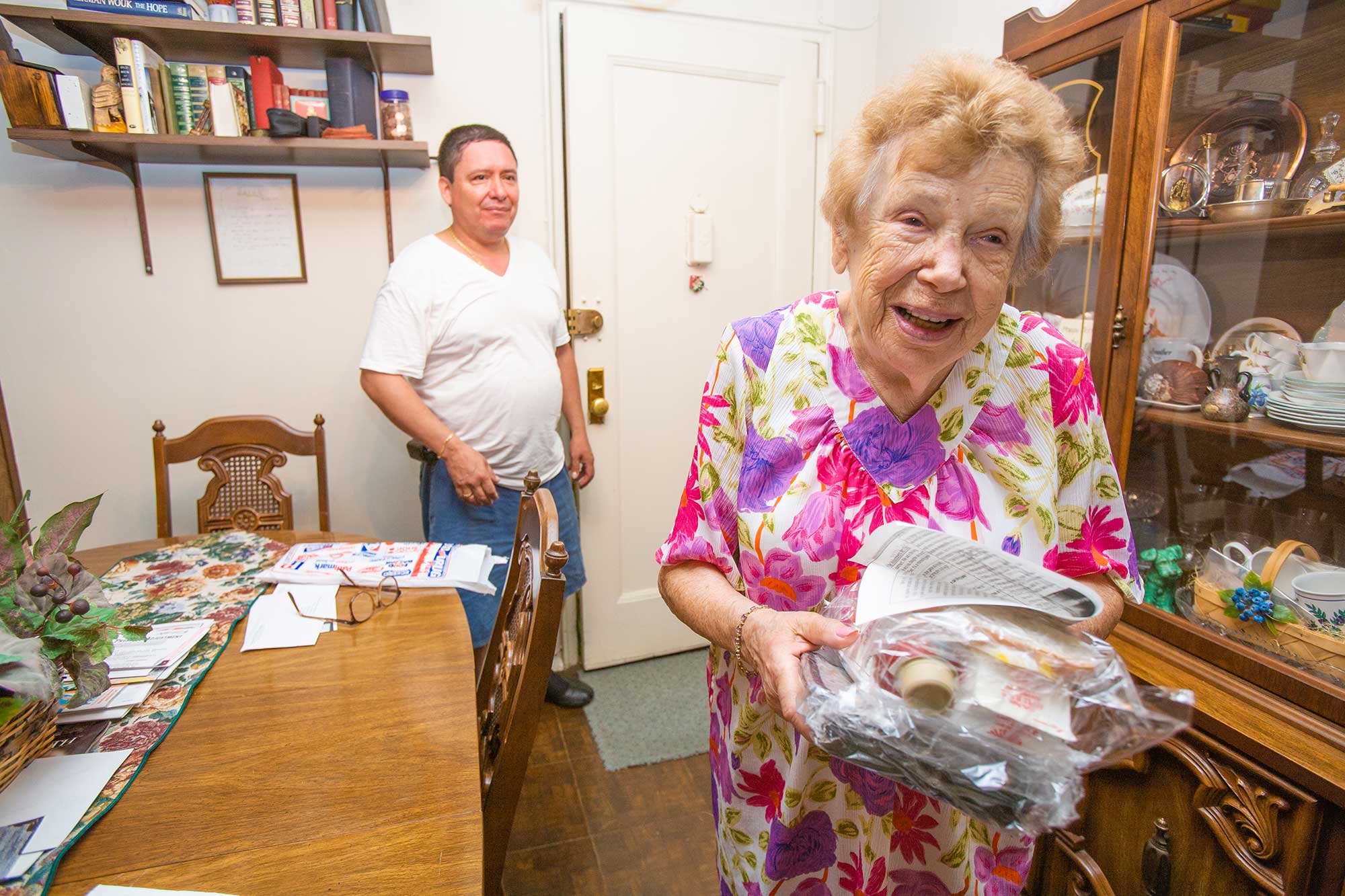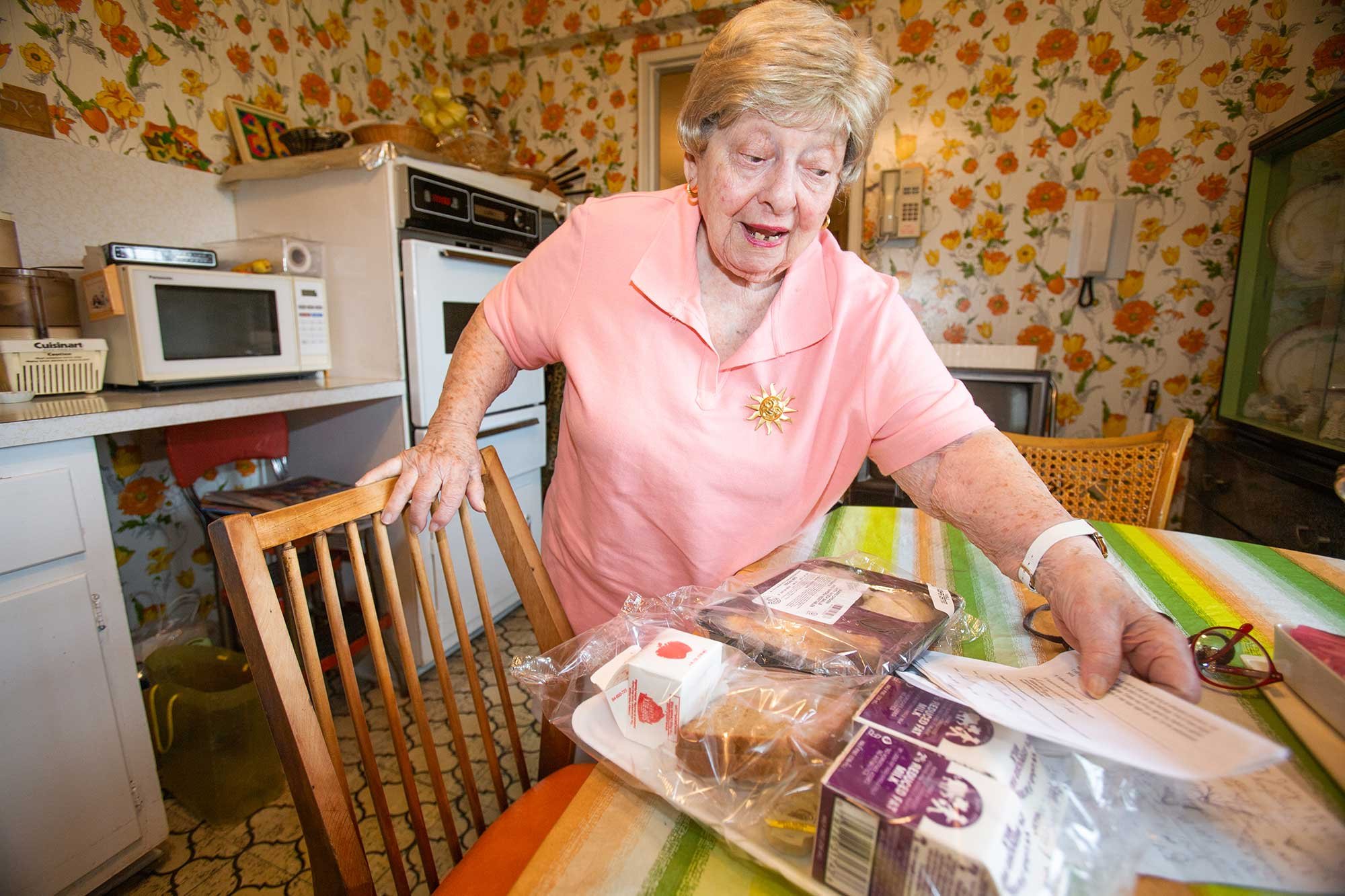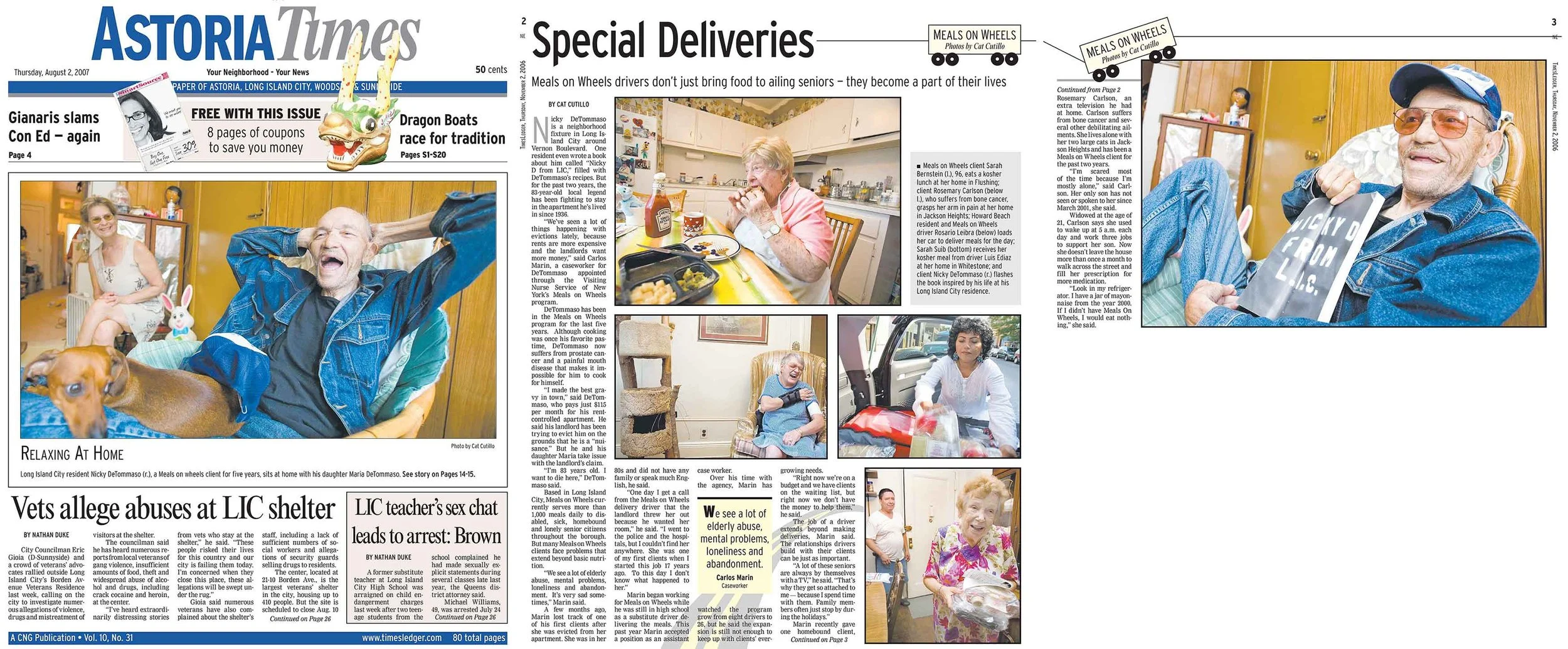“Look in my refrigerator. I have a jar of mayonnaise from the year 2000. If I didn’t have Meals on Wheels, I would eat nothing.” —Rosemary Carlson

Meals on Wheels, Long Island City, 2006
Story and photos by Cat Cutillo
Nicky DeTommaso is a neighborhood fixture in Long Island City around Vernon Boulevard. One resident even wrote a book about him called “Nicky D from LIC,” filled with DeTommaso’s recipes. But for the past two years, the 83-year-old local legend has been fighting to stay in the apartment he’s lived in since 1936.
“We’ve seen a lot of things happening with evictions lately, because rents are more expensive and the landlords want more money,” said Carlos Marin, a caseworker for DeTommaso appointed through the Visiting Nurse Service of New York’s Meals on Wheels program.
DeTommaso has been on the Meals on Wheels program for the last five years. Although cooking was once his favorite pastime, DeTommaso now suffers from prostate cancer and a painful mouth disease that makes it impossible for him to cook for himself.
“I made the best gravy in town,” said DeTommaso, who pays just $115 per month for his rent-controlled apartment. He said his landlord has been trying to evict him on the grounds that he is a “nuisance.” But he and his daughter, Maria, take issue with the landlord’s claim.
“I’m 83 years old. I want to die here,” DeTommaso said.
Based in Long Island City, Meals on Wheels currently serves more than 1,000 meals daily to disabled, sick, homebound, and lonely senior citizens throughout the borough. But many Meals on Wheels clients face problems that extend beyond basic nutrition.
“We see a lot of elderly abuse, mental problems, loneliness, and abandonment. It’s very sad sometimes,” Marin said.
A few months ago, Marin lost track of one of his first clients after she was evicted from her apartment. She was in her 80s and did not have any family or speak much English,” he said.
“One day I get a call from the Meals on Wheels delivery driver that the landlord threw her out because he wanted her room,” he said. “I went to the police and the hospitals, but I couldn’t find her anywhere. She was one of my first clients when I started this job 17 years ago. To this day, I don’t know what happened to her.”
Marin began working for Meals on Wheels while he was still in high school as a substitute driver delivering the meals. This past year, Marin accepted a position as an assistant case worker.
Over his time with the agency, Marin has watched the program grow from eight drivers to 26, but he said the expansion is still not enough to keep up with clients’ ever-growing needs.
“Right now, we’re on a budget and we have clients on the waiting list, but right now we don’t have the money to help them,” he said.
The job of a driver extends beyond making deliveries, Marin said. The relationships drivers build with their clients can be just as important.
“A lot of these seniors are always by themselves with a TV,” he said. “That’s why they get so attached to me—because I spend time with them. Family members often just stop by during the holidays.”
Marin recently gave one homebound client, Rosemary Carlson, an extra television he had at home. Carlson suffers from bone cancer and several debilitating ailments. She lives alone with her two large cats in Jackson Heights and has been a Meals on Wheels client for the past two years.
“I’m scared most of the time because I’m mostly alone,” said Carlson.
Widowed at the age of 21, Carlson says she used to wake up at 5 a.m. each day and work three jobs to support her son. Now she doesn’t leave the house more than once a month to walk across the street and fill her prescription for more medication.
“Look in my refrigerator. I have a jar of mayonnaise from the year 2000,” she said. “If I didn’t have Meals on Wheels, I would eat nothing.”
















